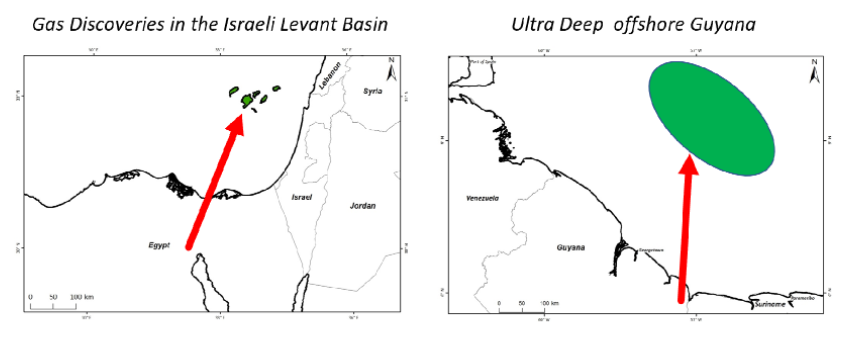The resemblance between the East Mediterranean Leviathan Gas Field and the prospectively of Guyana’s deep offshore
From initial look these system looks much different, but for a creative geologist with an experience perspective, who spent significant time studying the supply of sands to the deepwaters of the East Mediterranean, the Guyanese deepwaters look pretty similar.
One of the key elements in the quest for oil is finding a good reservoir, which in our case is usually a sandy layer in the sub-surface which can carry and accumulate the oil reserves.
As a first stage in my study, I looked for the source of these sands. In the East Mediterranean we have the Crystalline rocks of the Arabian-Nubian Shield, and in Guyana we have the Guiana Shield. Both excellent source for sands. Then comes the mechanism of transporting these sands from their source to the sink (deep offshore). The equivalent of the ancient Nile river is the Old Berbice river were both carried the sands for a long journey of several hundred kilometers. The critical time of the old Nile happened about 6-25 million years ago, while offshore Guyana the old Berbice river was active about 65-100 million years ago; different times same mechanism.
Reservoir Rocks from The Old Berbice River: Sands Supply – Distance from Source






